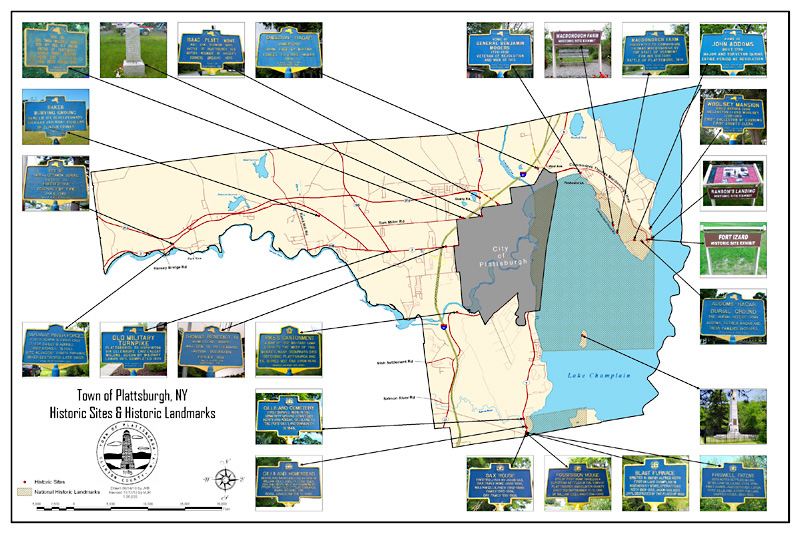Globally Significant-Regionally Exceptional
The Town of Plattsburgh is located in the northeastern part of New York State, nestled between the great Adirondack Park and picturesque Lake Champlain. Situated along the main transportation routes between New York City and Montreal, Plattsburgh is the closest large American municipality to the second largest Canadian City. This connection has allowed our manufacturing industry to thrive, and become the economic engine of the North Country.
The Town of Plattsburgh offers unique advantages including:
- Access to Canadian markets
- Home of the North Country Chamber of Commerce
- Vibrant Town Center Commercial Hub
- Motivated, creative and competitive labor force
- Low cost of living
- Pro-business public agencies
- Modern land use policies
- Affordable and well-maintained utilities
- In-place economic development resources and foreign trade zone
- Proactively maintained public infrastructure
- Superior access to recreational, cultural and historic resources
- Award winning educational institutions
- Regional health care center
Sections
Notable Town Achievements
- The Town was the first Clean Energy Community in Clinton County.
- The Town is a Purple Heart Community.
- The Town was the first community in Clinton County to adopt Smart Growth Principles.
Town History
The territory around what we know as Plattsburgh was occupied largely by the Iroquois, Western Abenaki, Mohican, and Mohawk people prior to the time the first recorded European sailed into the Champlain Valley. Samuel de Champlain claimed the region as part of New France in 1609.
No permanent settlement was made while French and English fur traders and native peoples vied for dominance in the area. Conflicts led to the French and Indian War until 1763 when the French relinquished control of the region to the English.
The conclusion of hostilities gave William Gilliland and Count Charles De Fredenburgh, a former Captain in the British Army, an opportunity to explore the richness of the area that was to become Plattsburgh. Gilliland built his Possession House near the Salmon River at the southern end of the present Town in 1766 and later built a mill nearby. De Fredenburgh built a stately family home and mill on the Saranac River and workers cabins near the Lake in 1770. In 1775, tensions leading up to the American Revolution forced De Fredenburgh, a Loyalist to King George, to seek refuge for his family in Montreal . The Count returned to protect his property, but found it burned and he mysteriously disappeared.
It was safe enough by 1785 for Zephaniah Platt and 32 others to settle the area. The New York State Legislature granted Platt’s company 33,000 acres along with the right to establish the first Township in what is now Clinton County. Most of the acreage came from lands previously claimed by De Fredenburgh from the English, but were annulled by New York. The land encompassed a large geographic area including today’s Towns of Peru (1792), Beekmantown (1820), Saranac (1824), and Schuyler Falls (1848). DeFredenburgh’s children and William Gilliland contested the Legislature’s award of that claim, but were unsuccessful.
The new Town of Plattsburgh, conveniently located between Montreal and Albany, drew new settlers. Because of its location, it also became a primary strategic target for the British in the War of 1812. Its successful defense by an outmanned and ragged Naval and Army force was a key to American victory and conclusion to the war.
The central local community set itself off from the Town of Plattsburgh by incorporating as a village in 1815 and established the city government in 1902.
The Town’s population mushroomed during the 1950’s due to the establishment of the Plattsburgh Air Force Base. Rapid expansion continued into the 1960’s with the construction of the Adirondack Northway and Plattsburgh State University College, and continued during the 1970’s and 1980’s. The closure of Plattsburgh Air Force Base in 1995 prompted a rethinking of the area’s economic base. A conversion of the Air Force Base to civil development, housing, industry and business has been successful. With a population of 11,685 residents (1997 estimate) and growing, the Town benefits from a strong regional economy and is home to the Plattsburgh International Airport, educational institutions including Clinton Community College, and a growing number of significant industries and businesses.
Historical Markers

